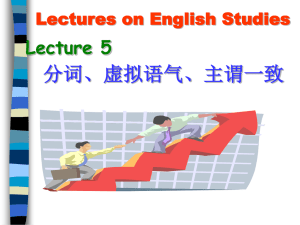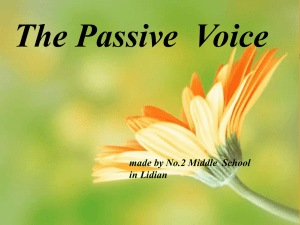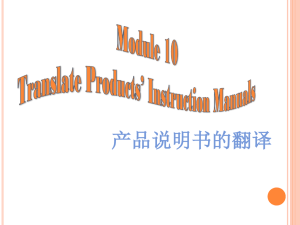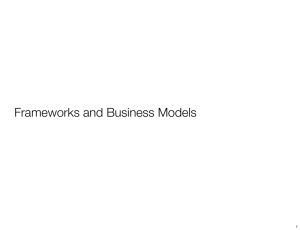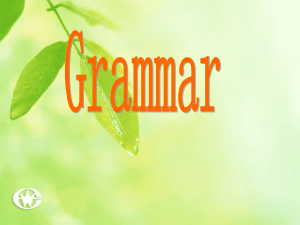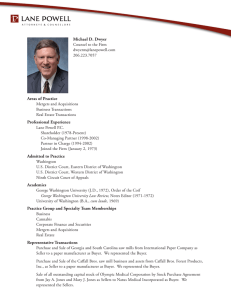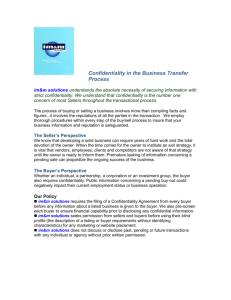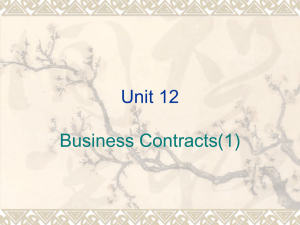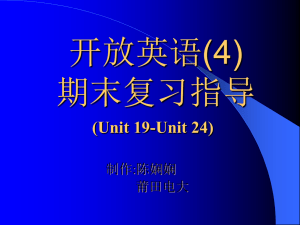Unit6(1)
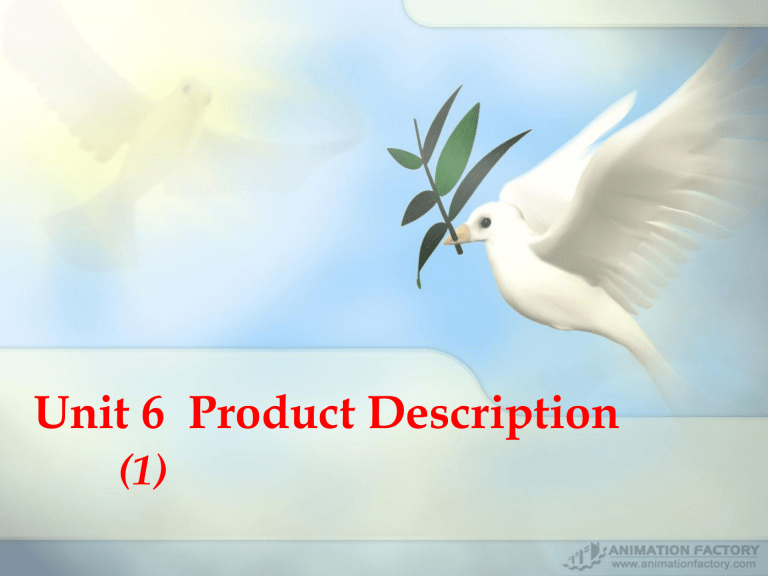
Unit 6 Product Description
(1)
contents
1.
产品说明书
2.
产品说明书的语言特点
3.
翻译产品说明书时应该注意: A
4.
翻译产品说明书时应该注意: B
5.
翻译产品说明书时应该注意: C
6.
常用的翻译方法:反译法 (1)
7.
常用的翻译方法:反译法 (2)
8.
常用的翻译方法:反译法 (3)
9.
常用的翻译方法:反译法 (4)
10.
常用的翻译方法:反译法 (5)
11.
常用的翻译方法:反译法 (6)
1.
产品说明书
(
Instruction/Direction/Description
)
产品说明书是产品标识的重要组成部分,是在产品
或包装上用于识别产品或其特征、特性的各种表达和
指示的统称。产品说明书主要用文字、符号、标志、
标记、数字及图案等来表示,给销售者、购买者提供
了有关产品的信息,帮助他们了解产品的性能、质量
状况,说明产品的使用、保养条件,起到引导消费的
作用。产品说明书通常由标题和正文两部分组成。
2. 产品说明书的语言特点
产品说明书的语言一般具有以下特点:
1)
语言简洁
2)
客观、精确,具有感染力
3)
条式风格突出,版面设计独特
3.
翻译产品说明书时应该注意:
A. 遵循两条翻译原则:
1 )保持其知识和技术的传播性。说明书起着传播技术和知识的作用
,介绍机件的原理和产品功能、主要技术参数或主要成分。翻译
时不得随意更改、漏译,必须忠实于原文。例如:
This machine is equipped with a gear transmission mechanism, and its multi-dies are arranged in line. It can draw steel, aluminum, brass and other kinds of metal wires.
本机采用齿轮变速传动结构,串联组成多模连续拉丝机,可拉拔
钢、铝或黄铜等金属线材。
2 )注意语言的可读性和感染力
Add sugar and milk to taste.
加入少量的牛奶和糖,味道更佳。
A nourishing beverage for all age. An excellent gift in all seasons.
本品适宜于四季饮用,是老少皆宜的营养饮料,也是馈赠亲友之
佳品。
4.
翻译说明书时应该注意:
B.
熟悉英语产品说明书的常用句型
( 1 )情态动词 /be+ 形容词 / 过去分词 + 目的状语
该句型主要用于文章开头,说明该产品的用途。
( 2 ) 情态动词 /be+ 介词短语
这种句型用于说明物体的特征、状态和范围,以及计
量单位等。
( 3 )现在分词 + 名词
这种句型用于说明维修或操作程序及有关技术要求。
( 4 )名词 + 过去分词
5.
翻译说明书时应该注意:
C . 按不同题材说明书翻译
各类产品的性质和用途不同,产品的说明书的方
法及内容也各不相同。所以,熟知不同题材说明书的
语言及内容将有助于我们的翻译。常见的产品说明书
有机电产品、食品类、医药产品、化学用品类。
例如 : 食品成分
Ingredients: fresh beef of high quality , sugar , chilli oil, sesame oil, salt, condiments.
配料:优质鲜牛肉、白砂糖、辣椒油、芝麻油、盐、
调味料。
6.
常用的翻译方法:反译法( 1 )
反译法的概念
英语和汉语都有从正面和反面来表达一种概念的现
象,但是两种语言使用正反和反正表达方式存在差异
。英语有些从正面表达的句子翻译成汉语时更适合使
用反面表达方式。反之,英语有些从反面表达的句子
对应的译文则习惯用正面表达方式,这种翻译方法叫
做反译法。
7.
常用的翻译方法:反译法( 2 )
英语从正面表达,译文从反面表达。
1 ) The claims mentioned above shall be regarded as being accepted if the Sellers fail to reply within 30 days after the Sellers received the Buyer’s claim,
若卖方收到上述索赔 30 天未予答复,则认为卖方已经
接受买方的索赔。
2 ) It was beyond his power to sign such a contract.
他无权签订合同。
3 ) The price is too high to be accepted.
价格太高,无法接受。
8.
常用的翻译方法:反译法( 3 )
英语从反面表达,译文从正面表达。
1 ) There is no rule that has no exceptions.
任何规则都有例外。
2 ) We shouldn’t be careless of consequences.
我们应该考虑后果。
3 ) I rode around with him one day seeing how the ships unloaded.
我和他乘车转了一天,看看穿如何卸货。
9.
常用的翻译方法:反译法(
4
)
汉语从正面表达,译文从反面表达。
1 ) 你们寄来的价目但上的项目正是我们所需要的部件。
The items on your price list are none other than the spare parts of we are currently in urgent need.
( 肯定形式的副词短语“正是”转换翻译成否定形式的 none other than, 语气加强。 )
2 )凭票退还押金。
No deposit is to be refunded unless the ticket is presented.
( 把表示肯定意义的句子转化成使用双重否定的连接短语 no…unless
结构,加强语气。 )
3 ) 今天我们只要走出几步路,就一定会注意到广告。
Today we cannot walk a few steps without noticing advertising.
(此句采用了反译法,翻译成了否定句。)
10.
常用的翻译方法:反译法(
5
)
汉语从反面表达,译文从正面表达。
1 )所有物品价钱还不到两英镑。
All the items cost under two pounds.
( 否定形式的动词短语“不到”转换成 under. )
2 ) 这次损害主要原因在于包装不良。
The damage appears to have been mainly caused by the faulty packing of the goods.
( 否定形式的形容词“不良”转换成肯定的 faulty.)
3 )若买方未能按时开立信用证,卖方有权全部或部分撤消销售确认
书,不再另行通知。
If the Buyer fails to open the Letter of Credit in time, the Seller shall have the right to rescind, without further notice, the whole or any part of the Sales Confirmation.
( 表示否定意义的动词短语“未能开立”翻译成肯定形式 fails to open 。 )
11.
常用的翻译方法:反译法( 6 )
有些句子既可以使用反译法,又可以保持原来的肯定
或否定形式,这完全取决于语境和译者的偏好。
1 )请不要说话。
Please keep silence.
No talking, please.
2) 法律面前,人人平等。
法律决不偏袒任何人。
Law is no respecter of persons.
3) 我们一定等你回来。
We shall surely wait until you are back home.
We won’t leave until you are back home.
12.Exercises
用反译法翻译下列句子:
1 ) Suddenly he heard a sound behind him, and he realized he was not alone in the office.
2) Now he certainly wouldn’t remember to come to the meeting.
3)He wishes to live a life free from care.
4)More often than not, you may find some businessman too busy or perhaps too rushed to greet you.
